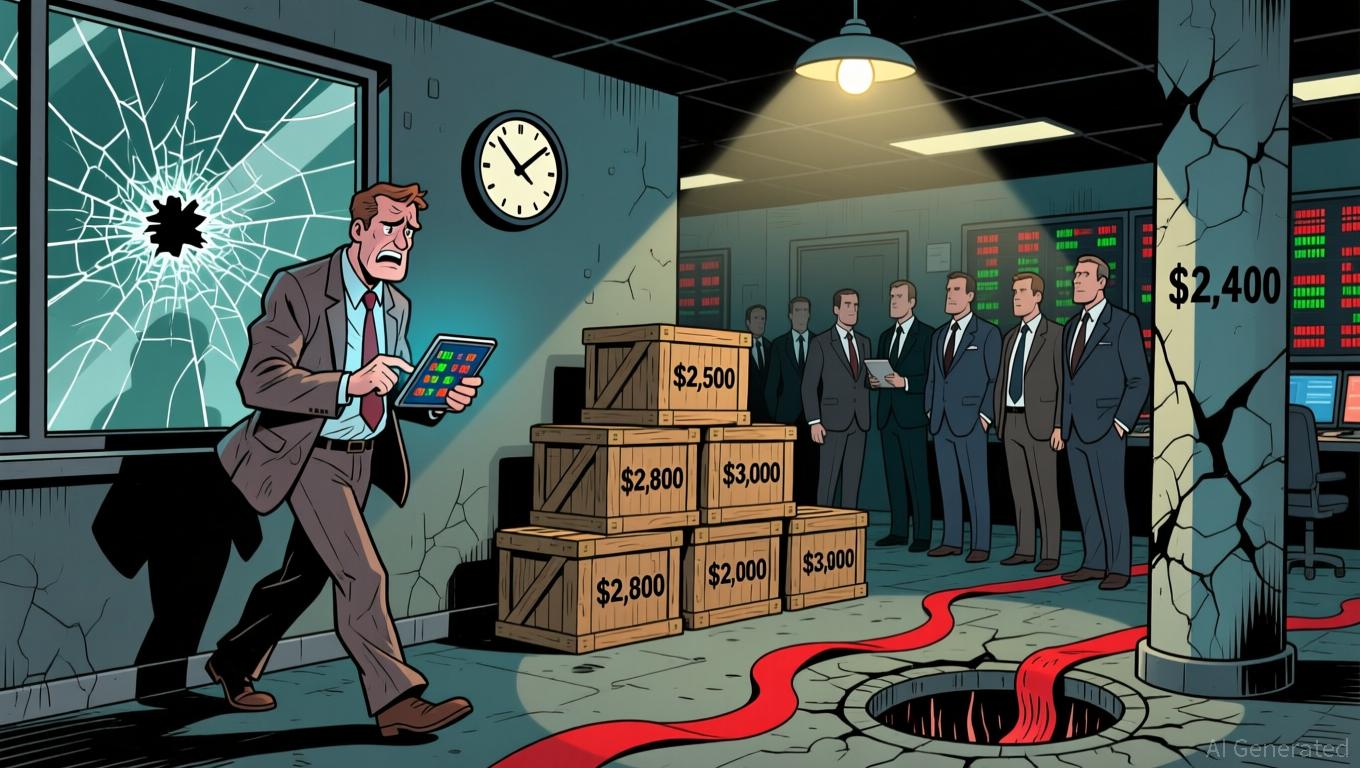Philippines Bets on Sui's Move Language as Education System Struggles With Basics
A new blockchain builder program in the Philippines is helping train young developers in a remote province to write blockchain code and ship projects on-chain.
Students from Puerto Princesa, the capital city of Palawan, a long, sparsely populated island province isolated to west of the Philippines, spent weeks learning something entirely new to them: Move, an open-source smart contract language originally developed from Meta’s Diem project, now adapted by its former developers who went on to build Sui and Aptos.
Dubbed the Sui Builder Program, the initiative offers a skills-based and results-oriented path that stands in contrast to economies of escape many young Filipinos have turned to as systemic disparities widen and formal opportunities narrow.
“What this opportunity has brought us changed our mindset [that] we should be thinking more, dreaming big,” Nicholo dela Rosa, a third-year computer science student at Palawan State University, said onstage Friday at YGG Play Summit, the largest player-focused Web3 gaming event held annually in Manila.
His team, The Scouts, won a hackathon as part of the program to create Campfire, an on-chain app that digitizes certificates and community assets while letting users earn badges for event participation. His co-developer, JK Rabanal, described it as a “gamified Luma on Sui,” referring to an app popular among crypto industry events.
Asked why Move makes a good starting point for new developers in places far from major tech hubs, James Wing, who leads AAA gaming partnerships at Mysten Labs, developers of the Sui blockchain, told Decrypt the programming language “allows for object oriented models” that are a “more natural architecture to learn and build on for real world use cases.”
The initiative was supported by the Philippine government’s national agency for information and communications technology through its regional office for Palawan. It opened training hubs and provided the computer labs, internet access, and local coordination.
Yield Guild Games helped handle curriculum design and delivery, mentorship, and connections for job and project opportunities through Metaversity, its educational arm.
A total of 127 students joined, though only 50 were able to complete the program after two consecutive typhoons earlier this month disrupted the final weeks of instruction.
Speaking with Decrypt on the ground two days before the statistics were disclosed Friday, Bianca Cruz, co-lead at Metaversity, told Decrypt the vibe in Palawan was much slower and laidback, but the students were eager to learn.
Cruz recounts how one student told her that Palawan “rarely” has that kind of program.
“You feel that they haven’t really had access to these developer communities, but the moment something finally lands in their backyard, they show up, even if it means long commutes and giving up their weekends,” Cruz said.
Still behind
But while the program’s emphasis on producing job-ready developers aligns with the government’s aim to create 8 million digital jobs by 2028, it also reflects a national education system that has so far prioritized employability over core competencies.
Acording to a 2018 analysis, Filipino students placed almost at the bottom worldwide in reading, math, and science, with some of the largest shares of test-takers failing to meet minimum proficiency levels.
Years later, the pattern has persisted. Scores have improved, but remained among the lowest globally, showing long-standing gaps in baseline comprehension, numeracy, and critical reasoning, per a 2022 OECD report. The country also still lacks basic digital literacy, according to a 2022 World Bank study.
This comes as spending for the country’s education has historically tracked lower at 3.6% of GDP by 2024, falling behind regional standards of 4% based on UNESCO’s recommendation.
The country’s budget management agency claimed in August this year that it had reached the 4% minimum for next year’s allotment.
The initiative gives Filipino students “exposure to advanced digital skills” and signals “a commitment to a future-ready workforce beyond traditional BPO roles,” Paolo Lising, a global development student at Harvard University’s Extension School, told Decrypt.
Yet “access alone isn’t enough,” Lising notes. “Many Filipinos, like those who joined Axie Infinity, lack foundational skills in literacy and comprehension, limiting their ability to navigate complex digital systems,” he said, citing forthcoming research as part of his coursework.
“For programs like this to have lasting impact, they must be paired with stronger foundational education,” he added.
Disclaimer: The content of this article solely reflects the author's opinion and does not represent the platform in any capacity. This article is not intended to serve as a reference for making investment decisions.
You may also like
Ethereum Updates: Ethereum Drops to $2,800, Prompting Surge in Demand for ZKP's Hardware-Based Presale
- Ethereum's price fell below $2,800, triggering $6.5M liquidations and testing critical support levels amid declining on-chain demand metrics. - Institutional players like BitMine accumulated 3.62M ETH (~$10.4B) despite the selloff, signaling long-term bullish conviction. - ZKP's hardware-driven presale gained traction with $17M in ready-to-ship Proof Pods and Miami Dolphins partnership for privacy-focused sports analytics. - Mutuum Finance's $19M DeFi presale and ZKP's auction model with $50K wallet caps

Vitalik Buterin Supports ZKsync: What This Means for Layer 2 Scaling
- Vitalik Buterin endorsed ZKsync in late 2025, highlighting its "underrated and valuable" work alongside the Atlas upgrade achieving 15,000 TPS and $0.0001 fees. - ZKsync's zero-knowledge rollups and EVM compatibility enabled institutional adoption by Deutsche Bank , Sony , and Goldman Sachs for cross-chain and enterprise use cases. - The Fusaka upgrade aims to double throughput to 30,000 TPS by December 2025, positioning ZKsync to compete with Polygon zkEVM and StarkNet in Ethereum's Layer 2 landscape. -

The ZK Atlas Enhancement: Revolutionizing Blockchain Scalability?
- ZKsync's 2025 Atlas Upgrade achieves 15,000–43,000 TPS with sub-1-second finality, addressing Ethereum L2 scalability bottlenecks via Airbender proofs and modular OS. - DeFi protocols like Aave and Lido leverage ZKsync's $0.0001/tx costs to unify liquidity, while Deutsche Bank and Sony adopt its trustless cross-chain infrastructure for compliance and transparency. - ZK token surged 150% post-upgrade, with TVL hitting $3.3B and analysts projecting 60.7% CAGR for ZK Layer-2 solutions by 2031 amid instituti

XRP News Update: XRP ETFs Spark Optimism—Is $1,115 Within Reach?
- XRP's price surge to $2.20 is driven by ETF launches, with $422M inflows from Franklin Templeton and Grayscale. - Technical indicators suggest a potential $2.50+ rally if support at $1.84 holds, with long-term forecasts reaching $26.50 by 2030. - Institutional adoption of Ripple's ODL and Ripple USD's $1B+ market cap highlight growing utility beyond remittances. - Regulatory clarity post-SEC ruling and macroeconomic factors remain critical for XRP's $1,115 potential in ultra-bullish scenarios.

